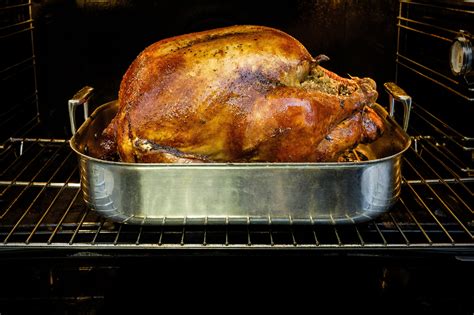How To Roast a Turkey: A Step-by-Step Guide for a Perfect Bird
Thanksgiving, Christmas, or any special occasion – the centerpiece of many festive meals is undoubtedly the roasted turkey. But achieving that perfectly golden-brown, juicy bird can feel daunting. This comprehensive guide will walk you through each step, ensuring your turkey is the star of the show.
Preparing Your Turkey for Roasting
Before you even think about turning on the oven, proper preparation is key to a delicious roast.
1. Thawing the Turkey Safely:
Thawing a frozen turkey requires careful planning. Never thaw at room temperature. The safest methods are:
- Refrigerator Thawing: This is the slowest but safest method. Allow approximately 24 hours for every 4-5 pounds of turkey.
- Cold Water Thawing: Submerge the turkey in cold water, changing the water every 30 minutes. This method is much faster, but still requires careful monitoring. A 12-pound turkey might take 6-8 hours.
2. Brining (Optional but Recommended):
Brining adds incredible moisture and flavor to your turkey. You can use a simple brine solution of salt, sugar, and water, or experiment with herbs and spices for added complexity. Brining time will vary depending on the size of your turkey and the brine recipe you choose.
3. Preparing the Turkey for the Oven:
- Remove the giblets: These are usually found in a neck cavity or a separate package inside the turkey cavity.
- Pat the turkey dry: Use paper towels to thoroughly dry the skin. This helps achieve crispy skin.
- Season generously: Use your favorite herbs and spices. Don't be shy! A classic combination includes salt, pepper, sage, and thyme. You can also rub the turkey with butter or oil for extra flavor and moisture.
Roasting Your Turkey to Perfection
Now for the main event!
1. Preheating the Oven:
Preheat your oven to 325°F (163°C). This is a crucial step for even cooking.
2. Roasting Time:
The roasting time depends on the weight of your turkey. A good rule of thumb is to allow approximately 13 minutes per pound. However, it's always best to use a meat thermometer to ensure the turkey is cooked thoroughly.
3. Basting (Optional):
Basting the turkey with pan juices helps keep it moist. Do this every 30-45 minutes during the roasting process.
4. Checking for Doneness:
The turkey is cooked when a meat thermometer inserted into the thickest part of the thigh registers 165°F (74°C). Don't rely solely on visual cues. A meat thermometer is your best friend!
5. Resting the Turkey:
Once cooked, let the turkey rest for at least 30 minutes before carving. This allows the juices to redistribute, resulting in a more tender and flavorful bird.
Tips for a Show-Stopping Roasted Turkey
- Use a roasting rack: This allows for even heat circulation and helps achieve crispy skin.
- Don't overcrowd the pan: Give your turkey plenty of room in the roasting pan.
- Tent with foil (if needed): If the turkey is browning too quickly, you can tent it loosely with foil to prevent over-browning.
- Make gravy from the pan drippings: Don't waste those delicious pan juices! They're perfect for making a rich and flavorful gravy.
By following these steps and tips, you'll be well on your way to roasting a turkey that is not only delicious but also impressive enough to be the star of any celebration. Happy cooking!
